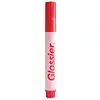What's inside
What's inside
 Key Ingredients
Key Ingredients

 Benefits
Benefits

 Concerns
Concerns

 Ingredients Side-by-side
Ingredients Side-by-side

Polyisobutene
Tridecyl Trimellitate
EmollientOctyldodecanol
EmollientCera Microcristallina
Emulsion StabilisingSilica Dimethyl Silylate
EmollientSimmondsia Chinensis Seed Oil
EmollientTocopheryl Acetate
AntioxidantPhenoxyethanol
PreservativeButyrospermum Parkii Butter
Skin ConditioningCaprylyl Glycol
EmollientLimnanthes Alba Seed Oil
Skin ConditioningGlyceryl Behenate
EmollientSodium Hyaluronate
HumectantCI 15850
Cosmetic ColorantIron Oxides
CI 77891
Cosmetic ColorantPolyisobutene, Tridecyl Trimellitate, Octyldodecanol, Cera Microcristallina, Silica Dimethyl Silylate, Simmondsia Chinensis Seed Oil, Tocopheryl Acetate, Phenoxyethanol, Butyrospermum Parkii Butter, Caprylyl Glycol, Limnanthes Alba Seed Oil, Glyceryl Behenate, Sodium Hyaluronate, CI 15850, Iron Oxides, CI 77891
Benzoyl Peroxide 5%
Water
Skin ConditioningDimethyl Isosorbide
SolventGlycerin
HumectantAcrylamide/Sodium Acryloyldimethyltaurate Copolymer
Emulsion StabilisingPropanediol
SolventNiacinamide
SmoothingCapryloyl Salicylic Acid
ExfoliatingButylene Glycol
HumectantMelaleuca Alternifolia Leaf Oil
AntioxidantCucumis Sativus Fruit Extract
EmollientIsohexadecane
EmollientSaccharide Isomerate
HumectantXanthan Gum
EmulsifyingPolysorbate 80
EmulsifyingPolyglyceryl-2 Isostearate
EmulsifyingHydroxyacetophenone
Antioxidant1,2-Hexanediol
Skin ConditioningCaprylyl Glycol
EmollientSodium Citrate
BufferingCitric Acid
BufferingEthylhexylglycerin
Skin ConditioningDisodium EDTA
Diethylhexyl Sodium Sulfosuccinate
CleansingCarbomer
Emulsion StabilisingSodium Hydroxide
BufferingDimethicone
EmollientSorbitan Stearate
EmulsifyingPEG-40 Stearate
EmulsifyingPhenoxyethanol
PreservativeSilica
AbrasiveTocopherol
AntioxidantBenzoyl Peroxide 5%, Water, Dimethyl Isosorbide, Glycerin, Acrylamide/Sodium Acryloyldimethyltaurate Copolymer, Propanediol, Niacinamide, Capryloyl Salicylic Acid, Butylene Glycol, Melaleuca Alternifolia Leaf Oil, Cucumis Sativus Fruit Extract, Isohexadecane, Saccharide Isomerate, Xanthan Gum, Polysorbate 80, Polyglyceryl-2 Isostearate, Hydroxyacetophenone, 1,2-Hexanediol, Caprylyl Glycol, Sodium Citrate, Citric Acid, Ethylhexylglycerin, Disodium EDTA, Diethylhexyl Sodium Sulfosuccinate, Carbomer, Sodium Hydroxide, Dimethicone, Sorbitan Stearate, PEG-40 Stearate, Phenoxyethanol, Silica, Tocopherol
 Reviews
Reviews

Ingredients Explained
These ingredients are found in both products.
Ingredients higher up in an ingredient list are typically present in a larger amount.
Caprylyl Glycol is a humectant and emollient, meaning it attracts and preserves moisture.
It is a common ingredient in many products, especially those designed to hydrate skin. The primary benefits are retaining moisture, skin softening, and promoting a healthy skin barrier.
Though Caprylyl Glycol is an alcohol derived from fatty acids, it is not the kind that can dry out skin.
This ingredient is also used as a preservative to extend the life of products. It has slight antimicrobial properties.
Learn more about Caprylyl GlycolPhenoxyethanol is a preservative that has germicide, antimicrobial, and aromatic properties. Studies show that phenoxyethanol can prevent microbial growth. By itself, it has a scent that is similar to that of a rose.
It's often used in formulations along with Caprylyl Glycol to preserve the shelf life of products.